Ads.txt Guide | What is It and How to Implement It?
Ads.txt file has been introduced by the IAB Tech Lab in 2017. It intends to protect ad inventory and avoid programmatic ad fraud. So far, it has done an excellent job in cultivating a transparent ecosystem within the digital advertising industry.
Even though the ads.txt initiative isn’t new, many publishers are still hesitant about it or aren’t fully aware of its benefits.
This article covers a brief overview of ads.txt, implementation tips for WordPress and Google AdSense, and its benefits for both publishers and advertisers.
What is Ads.txt?
Ads.txt, short for Authorized Digital Sellers, is a text file designed to reduce ad fraud such as domain theft or alleged domain hijacking. It increases the transparency of the publisher’s ad inventory by revealing where impressions are purchased and resold.
By allowing publishers to publicly list authorized sellers of their ad inventory, ads.txt can prevent fraudulent instances of unauthorized inventory sales. Ads.txt also enables ad buyers to validate the sellers and thus avoid unauthorized traffic sales.
❗️The latest version of ads.txt/app-ads.txt is 1.1. was released in August, 2022 and includes two new values for publishers to declare within their ads.txt files, “OWNERDOMAIN” and “MANAGERDOMAIN”.
What is ads.txt used for?
Ads.txt is used for:
- Identification of who is authorized to sell publishers’ ad inventory.
- Crawling of publishers’ domains by buyers, ad exchanges, etc.
- Matching the seller account IDs in bid requests.
- Protection of advertisers from counterfeit ad inventory.
How Does Ads.txt Work?
The publishers add the ads.txt file on the website, confirming their ownership of the domain and indicating partner accounts (such as ad exchanges and SSPs) eligible to sell their ad inventory. As a result, advertisers can easily access the list of all authorized publishers and their ad inventory online.
When the advertiser receives a bid request from the publisher, all he has to do is match the publisher’s account ID with the ads.txt file.
If everything matches, the advertiser can be sure that the publisher is legitimate. On the other hand, if the buyer discovers that the publisher’s ID isn’t validated, he can decide not to bid on the publisher’s ad inventory.
Ads.txt Example
Ads.txt is publicly available and can be checked by typing in the root domain followed by /ads.txt. Here’s an example of the Forbes ads.txt file (it can be accessed at: https://www.forbes.com/ads.txt).
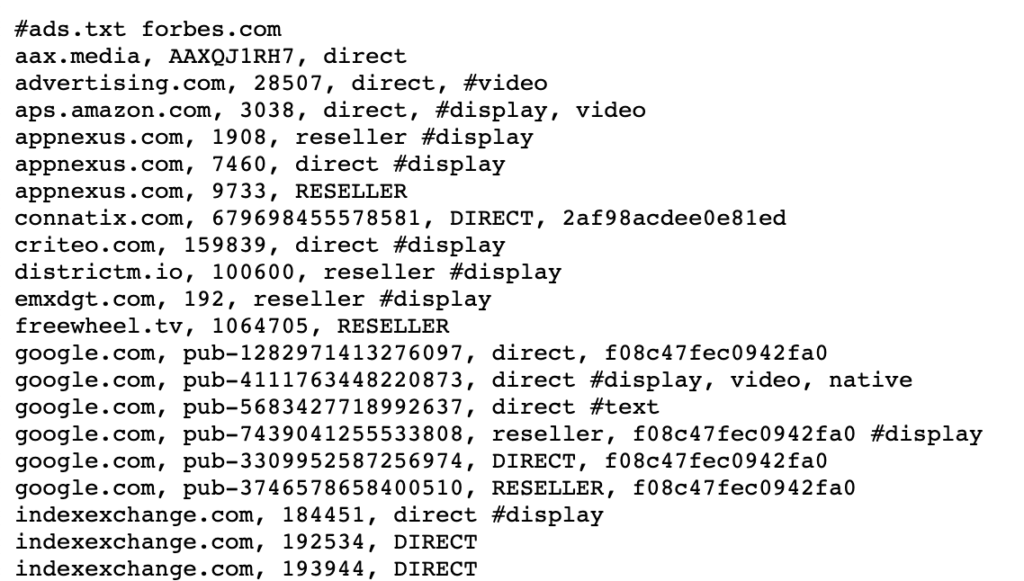
As you can see from the example, each line of the ads.txt file consists of either 3 or 4 parameters (pieces of data) separated by a comma.

Here is the explanation for each field:
- Field #1 (required):
This is the domain name of every SSP/ exchange which is allowed to sell or resell your ad inventory.
- Field #2 (required):
This is the identifier that corresponds to your account ID in field #1. It will be unique for every publisher in every SSP/ exchange.
- Field #3 (required):
This value can be DIRECT or RESELLER.
DIRECT: This means that the publisher has direct control over its account for the given SSP/ exchange.
RESELLER: This means that the publisher has authorized a third party to control his account and officially sell his inventory via a given SSP/ exchange.
- Field #4 (optional):
This is an ID that an SSP / exchange will have if they have registered with the Trustworthy Accountability Group (aka TAG).
How to Implement Ads.txt?
Implementing ads.txt today is very easy. Watch the video or read the instructions below.
How do I add ads.txt to WordPress?
The easiest way to add ads.txt in WordPress is through a plugin. After signing into WordPress, the first step you have to take is to install and activate the Ads.txt Manager plugin.
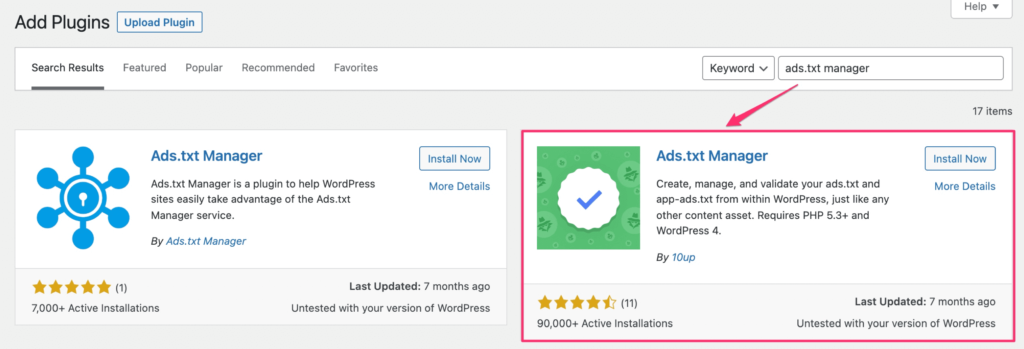
- Go to Settings > Ads.txt to configure the plugin’s settings and insert the necessary data.
- Next, add all the necessary data in the text field.
Example:

Don’t forget to separate each field with a comma.
- Click on Save Changes.
How to add ads.txt to AdSense?
You can download your ads.txt directly from your AdSense account.
There are 5 steps how to add ads.txt to Google AdSense:
- Sign in to your AdSense account.
- Click Sites > Overview.
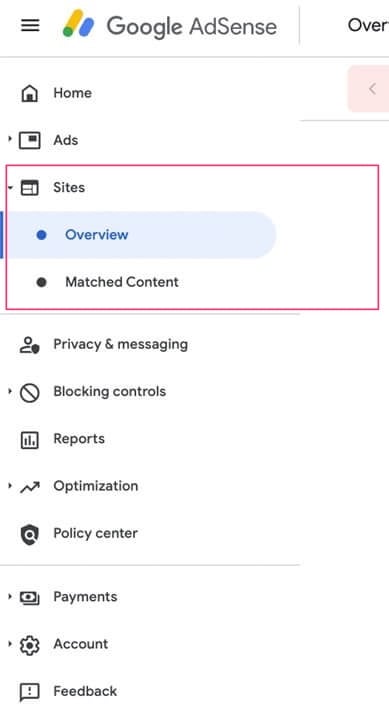
- Open the “Create an ads.txt file for…” message.
- Click Download. The ads.txt file will be automatically downloaded.
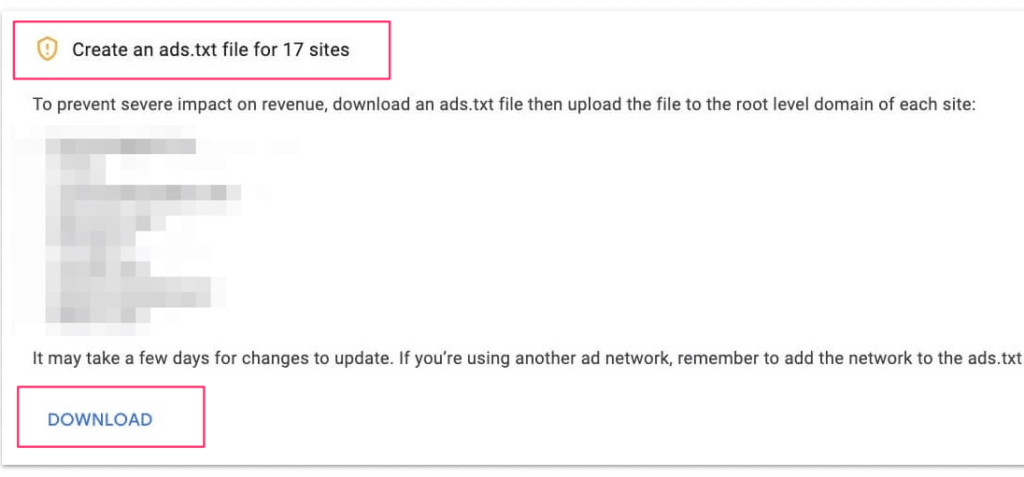
- Upload your ads.txt file to the root directory of your site. Make sure to check the file’s content by typing in your domain’s URL followed by /ads.txt.
If you don’t see the “Create an ads.txt file for…” message, you may need to manually copy your publisher ID from your account and add it to your ads.txt file.
You can find your publisher ID in Account > Settings > Account information in the Google AdSense dashboard.
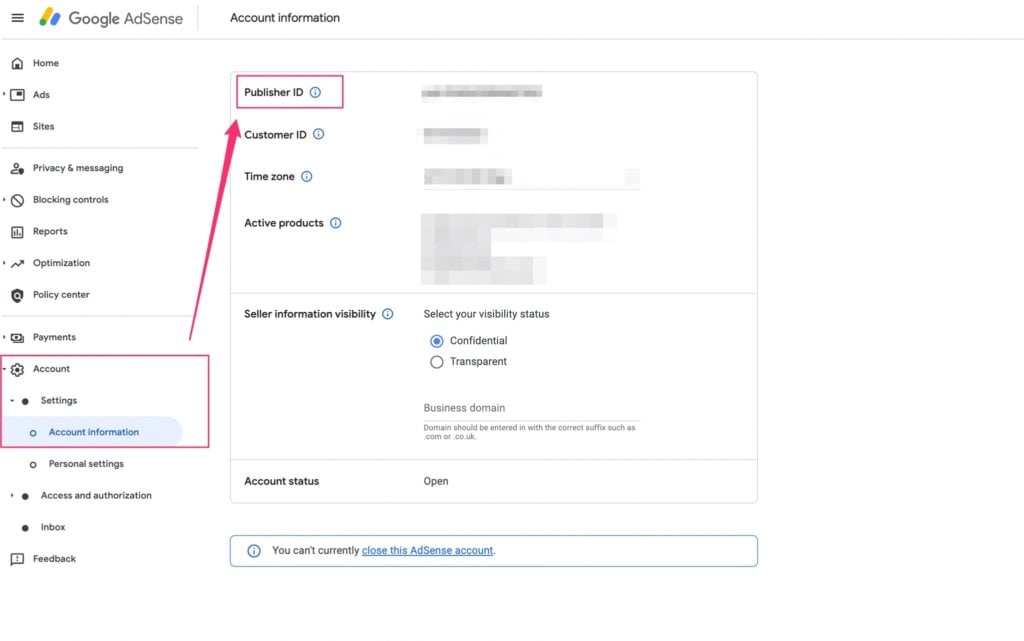
Your publisher ID will consist of 16 digits in this format– pub-0000000000000000.
Now, from your AdSense account:
- Click Sites > Overview.
- Open “Add your publisher ID to these ads.txt files” message.
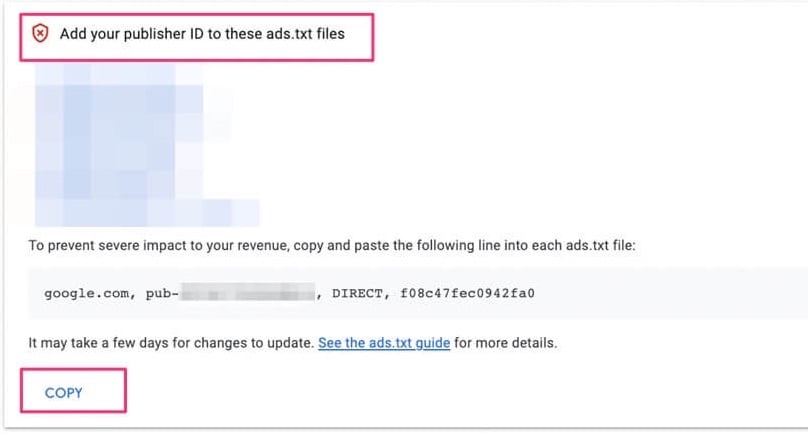
- Click Copy.
- Paste the line into each of your ads.txt files with your own publisher ID.
What Are the Benefits of Ads.txt File?
In 2021, the cost related to digital ad fraud accounted for $65 bln. Ads.txt helps advertisers verify the sellers and, ultimately, prevent spending money on counterfeit inventory.
In turn, publishers receive their share of ad spend that would have otherwise gone to ad fraud.

Besides, publishers don’t need a high degree of technical know-how to create the ads.txt file. Thanks to its accessible format, the ads.txt file can be created and updated in just a few minutes.
Is Ads.txt Mandatory?
According to Google, ads.txt is not mandatory but is highly recommended. If you have created your ads.txt file, you can ensure that partners who want to sell your ad inventory can be identified.
Conclusion
We strongly suggest all publishers who want to monetize their website with ads incorporate ads.txt into their website operations to prevent potential ad revenue loss.
If you still have any questions about ads.txt and its implementation, email us at [email protected].



